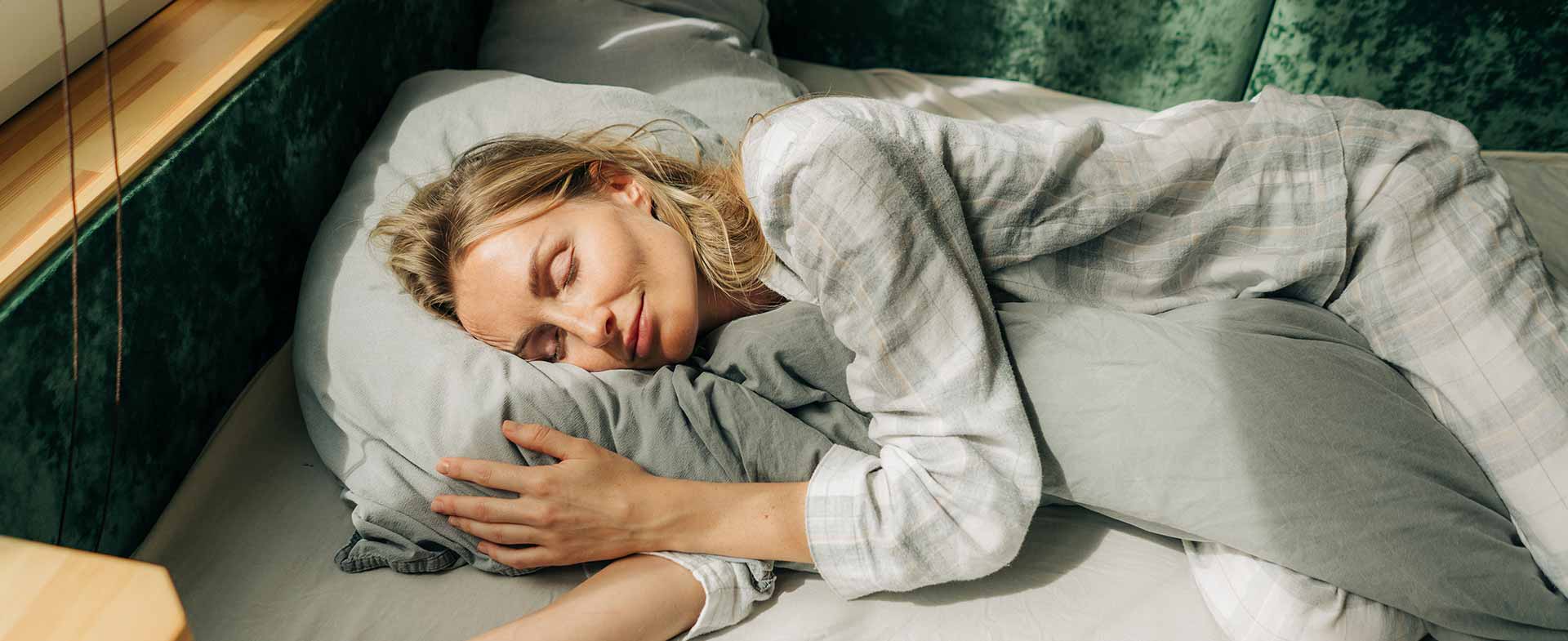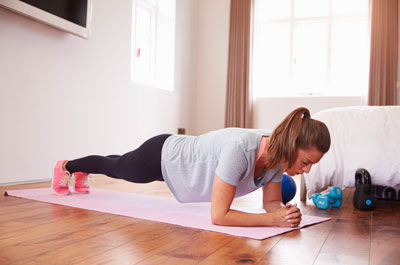A good night’s sleep is the best prescription for well-being. But if you’ve got back pain, sleep could be making you feel worse. The wrong sleep position can aggravate or trigger back pain.
How can you get the rest you need and wake up feeling refreshed? Linda Holland, D.C., a chiropractor at Henry Ford Health, shares the best sleeping positions to prevent or relieve back pain.
How Should I Sleep if My Back Hurts?
If you’re dealing with back pain, you’re not alone. Low back pain affects up to 85% of us at least once in our lives. “Many people wake up with a stiff, achy back and think they have to live with it, but you don’t,” says Dr. Holland. “Sleep is a time for self-care. You should rest and wake up your best.”
Try these sleep positions for a refreshing, pain-free start to your day:
Back sleeping
Back sleeping isn’t the most popular way to snooze, according to research. Yet it may be the best position for relieving back pain, so don’t rule it out.
“Many people don’t like back sleeping because they aren’t using pillows to their advantage,” says Dr. Holland. “A pillow under your knees can make this position comfortable and easy on your spine.”
Dr. Holland also recommends a flatter, contoured pillow for back sleepers. “A big fluffy pillow forces your neck forward, and a flat one lacks support for your neck,” she says. “The right back-sleeping pillow will cradle your head while your neck stays in alignment with your back.”
Side sleeping
Side sleeping—when done correctly—can be helpful for many people with back pain. “Don’t just plop into bed at the end of the day and lie on your side,” says Dr. Holland. “You need support and a few well-placed pillows to get your body in the correct alignment.”
For the best side sleeping position, follow these steps:
- Get the right pillow: “Contoured pillows designed for side sleepers align your head, neck and spine when you’re on your side,” says Dr. Holland. “These pillows tend to be higher than a back sleeping pillow because they need to fill the gap between the mattress and your ear. The width usually matches the length of the top of your shoulder to provide support.”
- Support your knees and hips: Place a pillow between your knees or use a body pillow to support your legs. “Aim to have a straight line from your head all the way down to your feet when you sleep,” says Dr. Holland. “When the hips or legs are out of alignment or twisted all night, you may feel the pain in your back in the morning.”
- Consider a lumbar support: If you need more support, try a log-shaped pillow designed to fit under the curve of your back or your side. “A lumbar support pillow or rolled-up towel under the space at your waist can take pressure off your spine when you’re sleeping on your side,” says Dr. Holland.
Sleep Positions to Avoid With Back Pain

Henry Ford Center For Integrative Medicine
If you have neck or back pain, avoid stomach sleeping. “Sleeping on your stomach twists your neck to one side and arches your back, which can lead to misalignment and pain,” says Dr. Holland. “It can also put strain on your shoulders, elbows, wrists, hips and knees if they’re pinned beneath you. This position can restrict natural breathing by compressing your rib cage and limiting your chest’s ability to expand.”
If you’re really set on stomach sleeping, it can be hard to switch—but it’s possible. “The right pillows can make back or side sleeping much more comfortable,” says Dr. Holland. “Over time, you can get used to the new position.”
Which Mattress Is Best for Back Pain?
Today’s mattress selection is enough to make anyone’s head spin. With thousands of options, how do you choose a mattress that’s good for your back? Dr. Holland says a medium-firm option is often your best bet.
“An extremely firm mattress may feel uncomfortable for back or side sleeping,” says Dr. Holland. “A soft one may cause you to sink in and bend your spine, which can trigger back pain. A supportive mattress with a soft topper for comfort is usually a good middle ground.”
Sleep Should Help Your Back, Not Hurt It
If back pain won’t go away and you can’t figure out why, take a look at your sleep position. “Sleep is an important time for your spine — and your entire body — to relax and rejuvenate,” says Dr. Holland. “Sleep should help you feel better, not cause more pain. Sometimes the right position and support can completely reshape your overall sense of well-being.”
Dr. Holland also recommends a routine to help your body relax before you turn in each night. “Stretching, yoga, meditation or soft music can help you release tension,” she says. “Then, when you lie down to sleep, your body is ready to relax and heal. When you sleep well, you can be well.”
Reviewed by Linda Holland, D.C., doctor of chiropractic medicine at Henry Ford Center for Athletic Medicine - Detroit and Henry Ford Medical Center - Ford Road.



